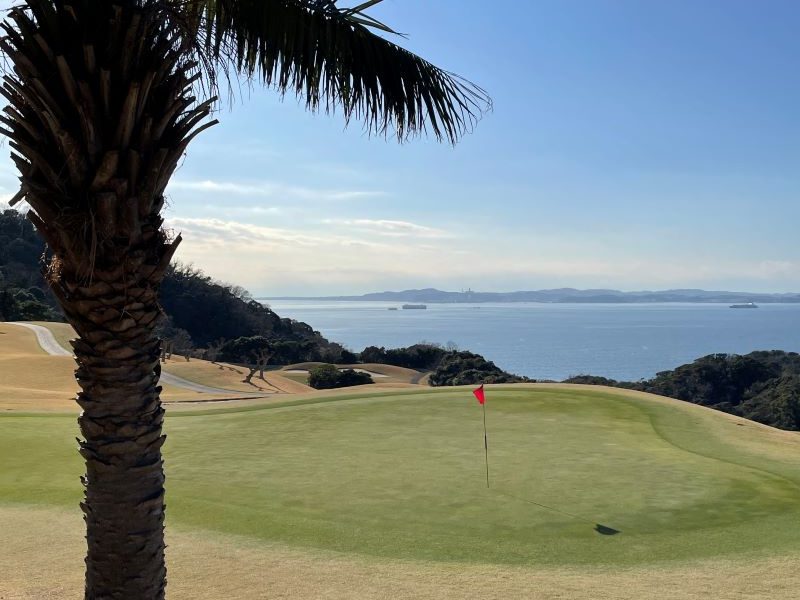Uraga, located in the eastern part of the Miura Peninsula in Kanagawa Prefecture at the mouth of the narrow Tokyo Bay, was once a base for pirates, but it later became a prosperous port town, with many ships stopping there as a key maritime transportation point and many seafood wholesalers lining the streets.
When the Tokugawa Shogunate was established, Uraga became a direct territory, and a magistrate’s office was established there, as it was the gateway to Edo, where the Shogun lived, and artillery batteries were also built to defend Edo Bay(Tokyo Bay).
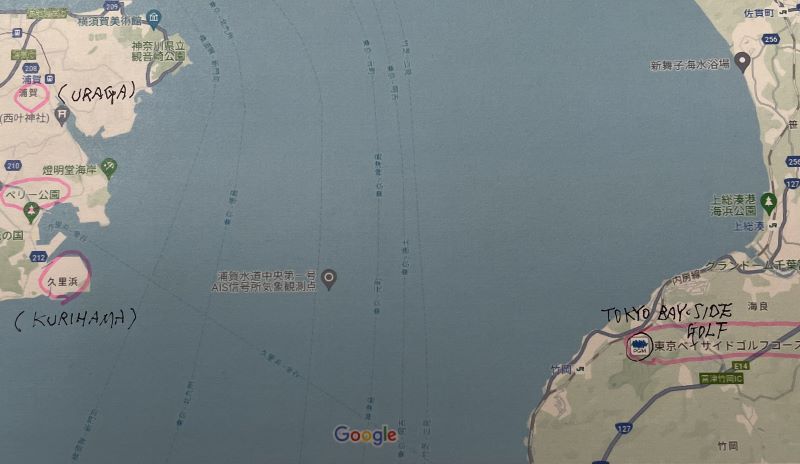
It was in Uraga that a momentous event occurred, known as the “Arrival of the Black Ships,” which left a lasting mark in modern Japanese history. 170 years ago, in July 1853, the United States Navy’s East India Fleet of four ships (known as the “Black Ships”), led by Commodore Matthew Perry, arrived and anchored off the coast of Uraga.
Panicked by this, the shogunate officials requested that the fleet sail to Nagasaki, but Commodore Perry would not listen and even threatened to use force, so they were forced to allow Commodore Perry and his entourage to land at Kurihama, near Uraga. There the Uraga Magistrate received a letter from US President Fillmore requesting diplomatic relations with the United States, as well as a letter of credentials for Commodore Perry.
The following year, in February 1854, Commodore Perry returned to Uraga and the Treaty of Peace and Amity between the United States and Japan was signed in Yokohama, located between Edo and Uraga.
Therefore, Uraga is a historic place that marked the end of 200 years of isolation and the beginning of Japan’s modernization.

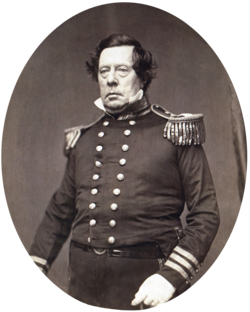
Located across Tokyo Bay from Uraga in Chiba Prefecture is the Tokyo Bayside Golf Course.
From the course and clubhouse, located on the heights of the Boso Peninsula, you can see Uraga, where the Black Ships anchored, and Kurihama, where Perry landed. On a clear day, you can also see the skyscrapers of Yokohama, where the Treaty of Peace and Amity between the United States and Japan was signed, and Mount Fuji, which Commodore Perry would have first seen 170 years ago.
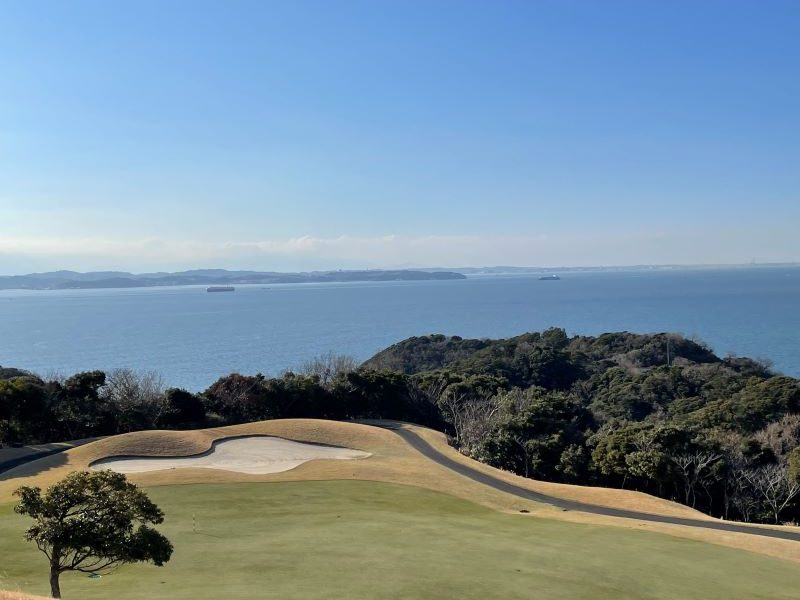
This golf course, with its magnificent views and reminiscent of a luxury Southern European resort, was originally planned as a members-only club by Mitsui & Co., Tokyu Real Estate and others. However, the collapse of the bubble economy made it difficult to realize the plan, so in October 2001, one of Japan’s leading investment and trading companies, Mitsui & Co., Ltd., opened the public “Takeoka Golf Club” on its own.
In 2004, it became the Zuien Country Club Takeoka Course, part of the Zuien Resort Group, which also operates golf courses and the Monterey Hotel, and in June 2018, it was transferred to PGM (Pacific Golf Management) Group and became the current Tokyo Bay Golf Course. The design was done by Dai-Nippon Construction Co., Ltd., a construction company under the umbrella of both NIPPO, the largest road paving company in Japan, and Kintetsu Railway Co., Ltd.
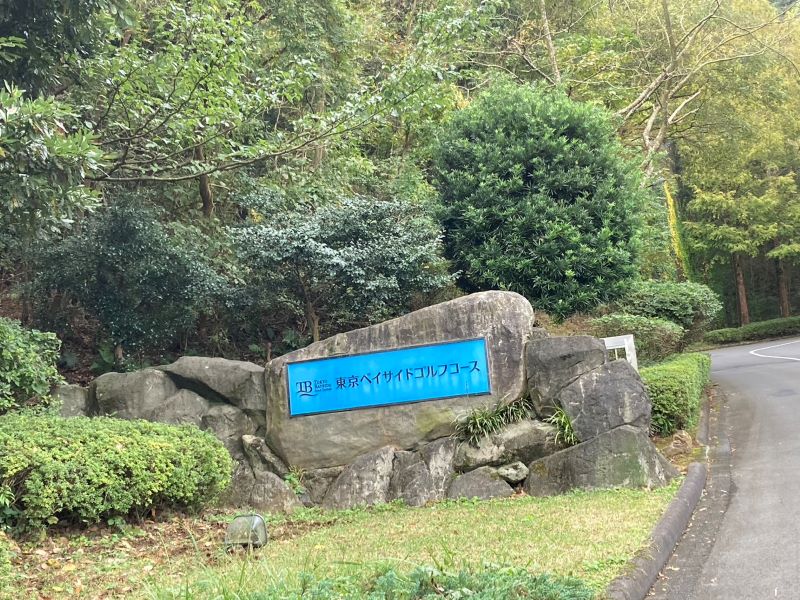
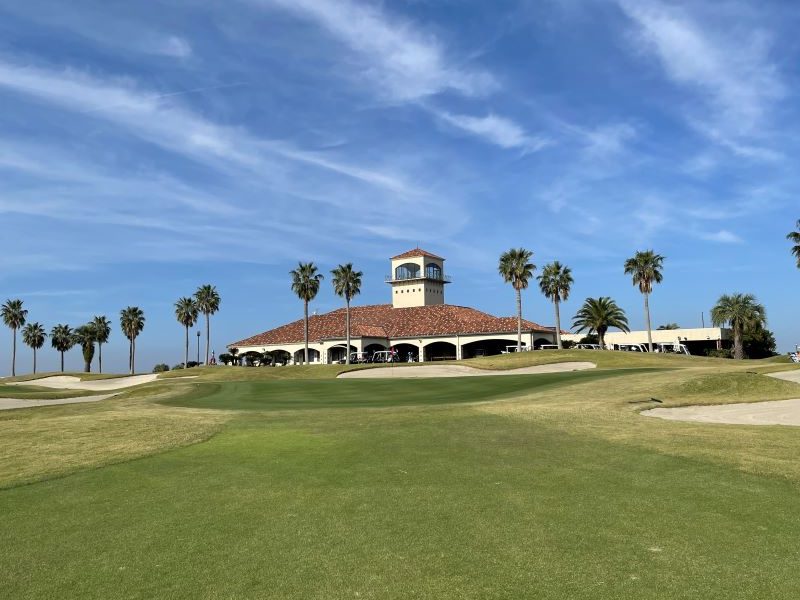
The 6,515-yard, 18-hole, par 72 course has beautiful hilly scenery, but the course also crosses valleys and the fairways have many ups and downs, making it difficult to get a sense of distance, and the fairways are narrowed by hazards and OB lines.

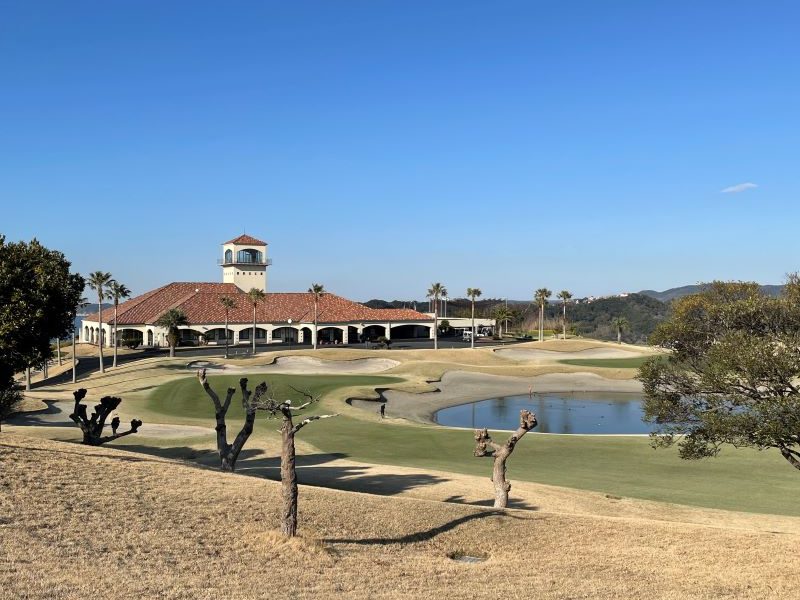
Because it is by the sea, it is easily affected by the sea breeze, so accurate shots and strategy that take the wind into account are required. In addition, the green is a single bent grass green with severe undulations, so how to overcome these is the key to scoring, so it is by no means an easy course. However, because the distances are relatively short, even women and beginners can expect to get a good score if they can hit shots that don’t go too far off the fairway. On the other hand, longer hitters may end up hitting the ball way past the fairway, so depending on the hole, they may need to consider using a club other than a driver.
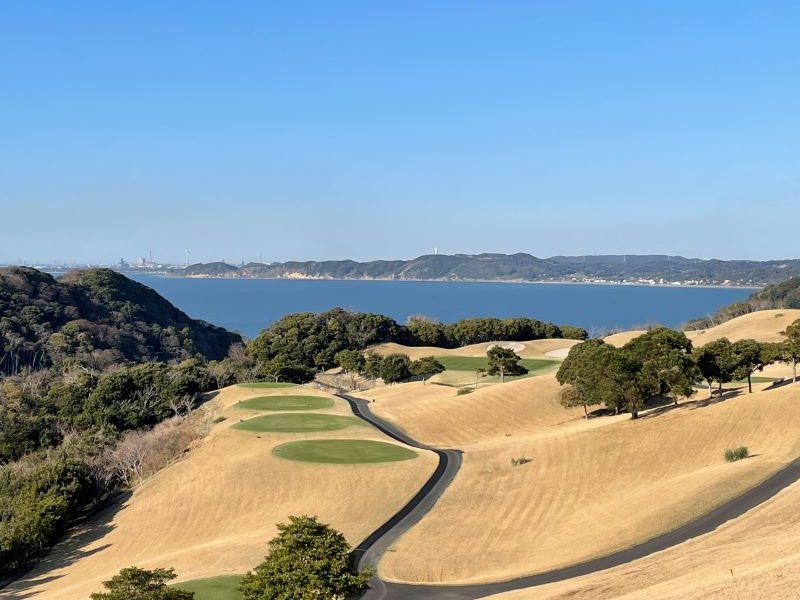
The stylish clubhouse with a Spanish tile roof is surrounded by palm trees, and combined with the warm climate of the inland sea, it has an appearance reminiscent of a luxury resort in Southern Europe. It may not be an exaggeration to say that this is a golf course with the best view in the Kanto region.
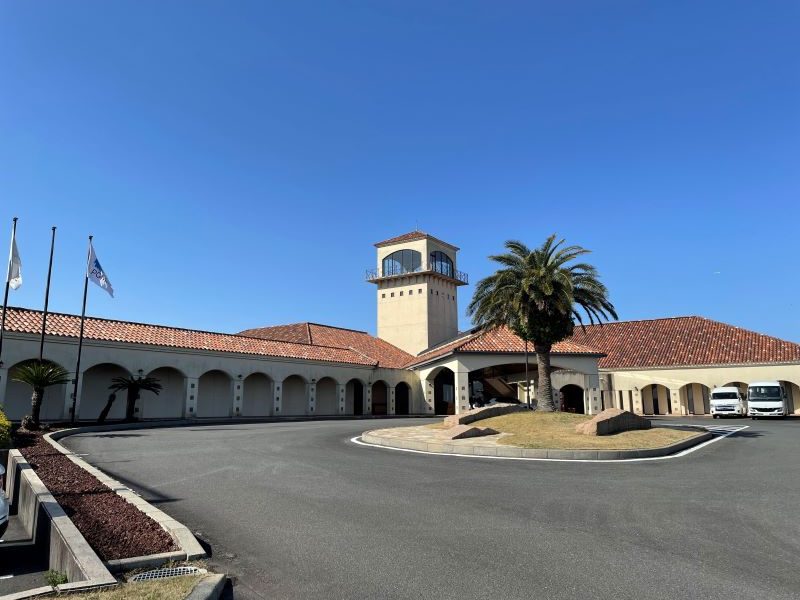
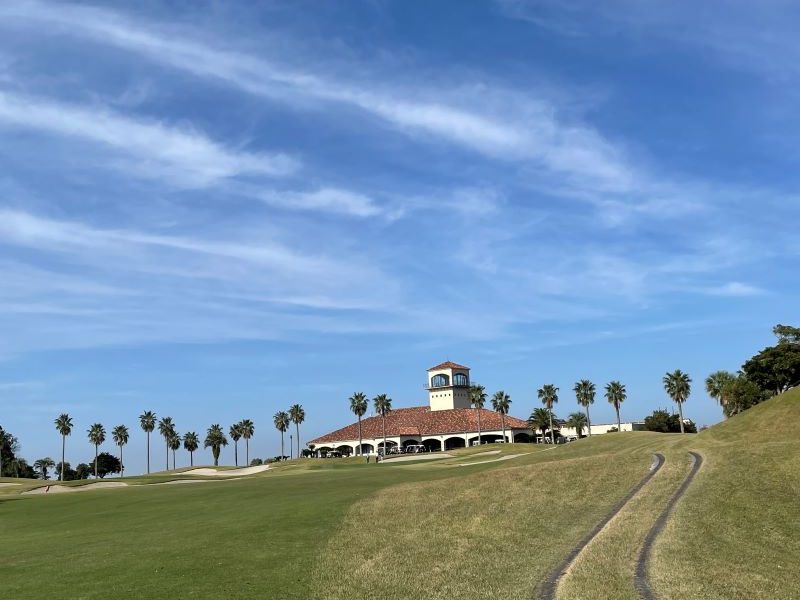
The restaurant in the clubhouse, located on a hill overlooking the sea, has large glass windows that allow you to enjoy your meal while taking in the spectacular panoramic view. They have also paid careful attention to the amenities in the lockers, baths and powder rooms, and equipment such as hair dryers, with female golfers in mind.
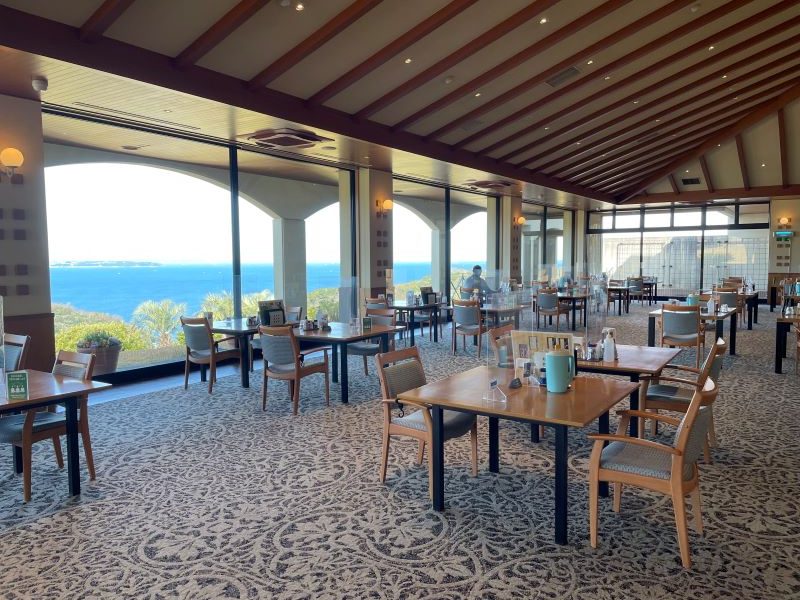
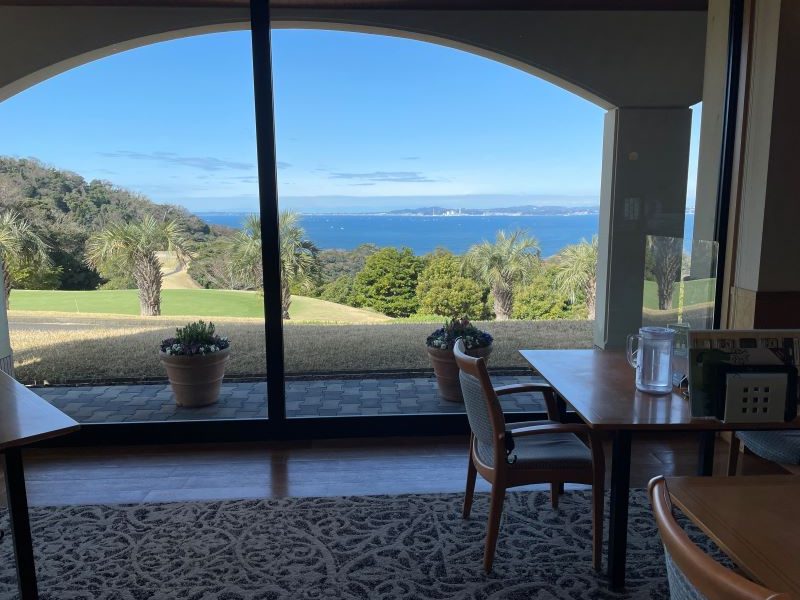
Now let’s take a look at the main holes.
Hole 1 (361 yards, par 4) is a spectacular downhill hole that curves sharply to the right.
There are OB lines on both sides, and a large bunker awaits in front of the teeing area, so choosing the right club is important for the tee shot. Aiming for a shot cut to the green from the top right of the valley is very risky.
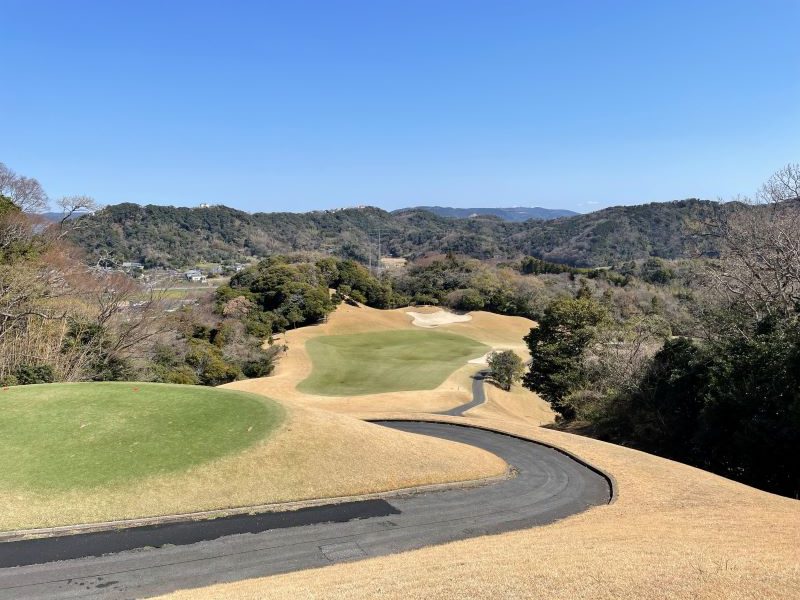
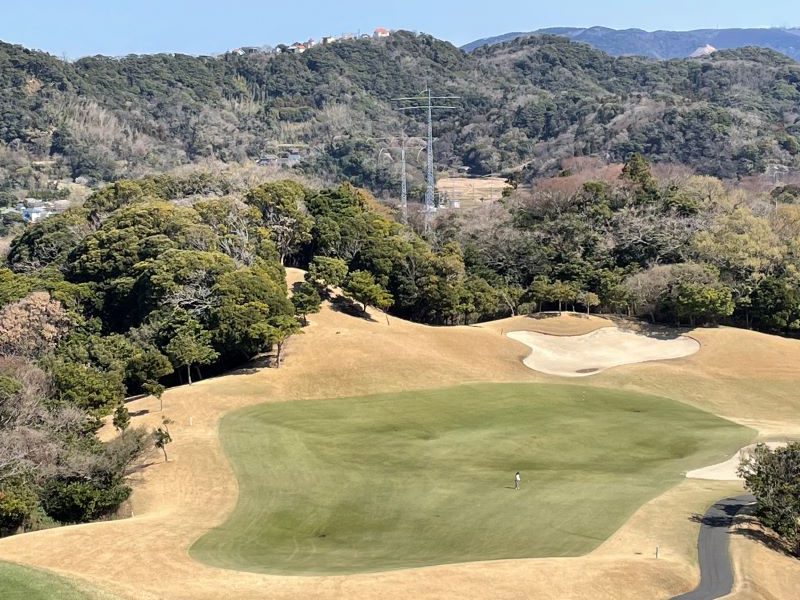
The 2nd hole (126 yards, par 3) is a slight downhill par 3 hole with trees jutting out from both sides and a large bunker in front of the green, making the tee shot feel a bit pressured.
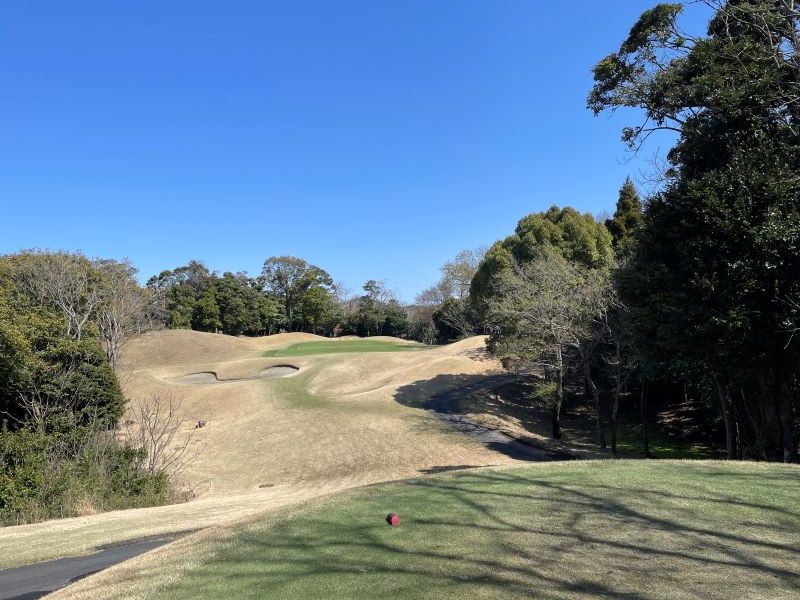
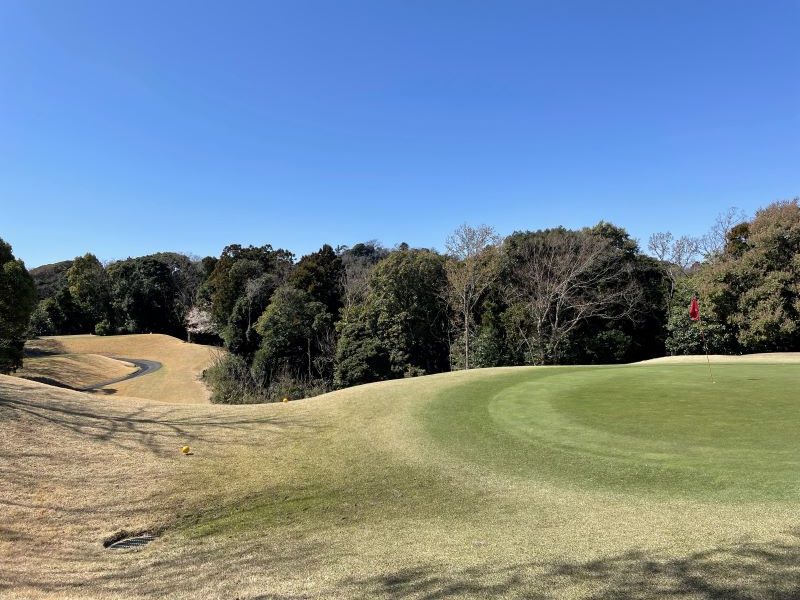
The 3rd hole (365 yards, par 4) is a par 4 hole that slopes to the right and curves gently to the right, so caution is required as the area where your tee shot will land is narrowed by OB lines on both sides. From that point onwards the fairway slopes slightly downhill and the green is long and vertical, meaning that depending on where you land the ball you may be left with a long putt.
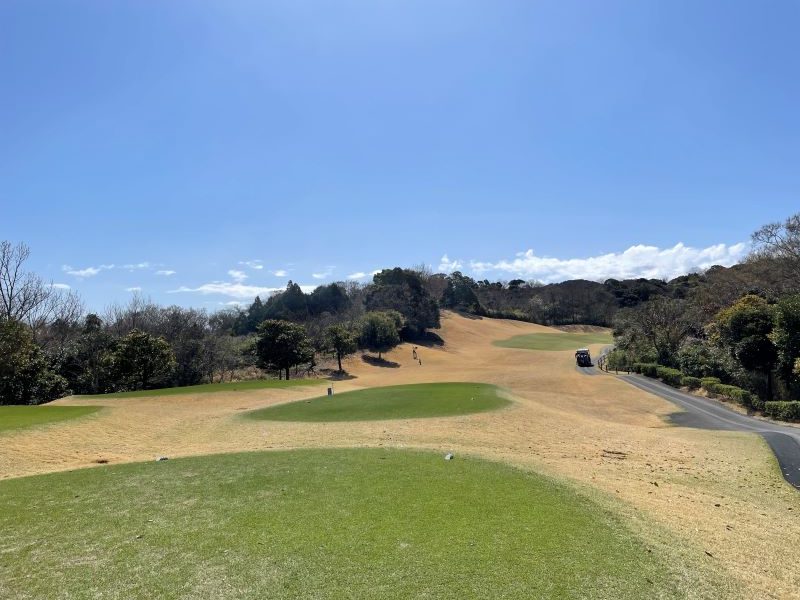
The 4th hole (363 yards, par 4) is a par 4 hole that curves sharply to the left. With OB looming on both sides of the fairway, and a slope leading up to the OB line, it is a difficult hole. The target area is near the cross bunker on the right-hand side of the fairway, but from that point onwards the ball slopes uphill and there is an OB line close on the left side of the green so you need to be careful approach shot.
The 5th hole (183 yards, par 3) is a long downhill par 3 hole. Here too, trees on both sides narrow the fairway and the OB line is close, so beginners may choose to aim for the green with their second shot while avoiding the guard bunker, rather than aiming for the green with their tee shot.
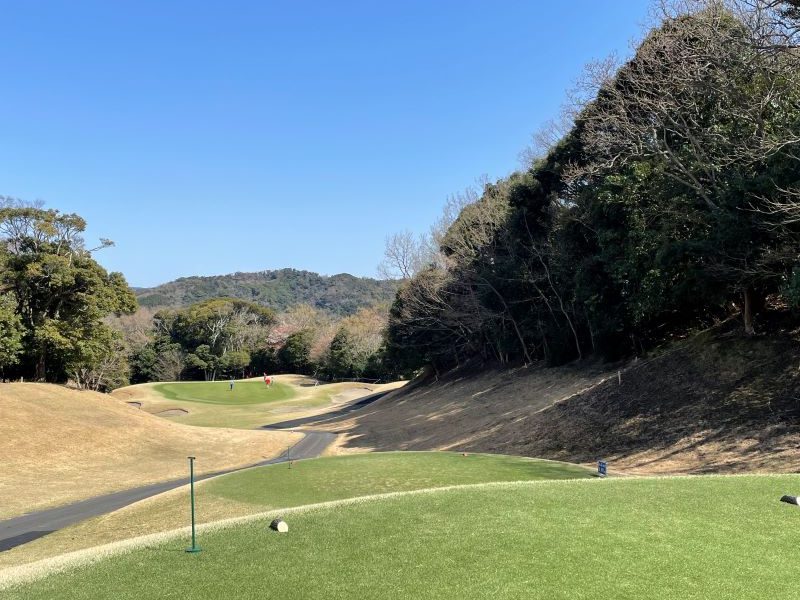
The 6th hole (387 yards, par 4) is a relatively long, slightly uphill par 4 hole, making it quite difficult to get a par on the green. Moreover, the front right side of the fairway slopes steeply downhill toward the teeing area, so if you miss your tee shot and don’t reach the fairway, the green will be even further away. The green is also elevated, so you can’t see the top, so you need to be careful with your approach shots.

The 7th hole (459 yards, par 5) is a par 5 hole where you hit up towards the green while curving slightly to the left, making it feel longer than the yardage indicates. There are two large guard bunkers in front of the green, so avoid them and aim for the green with a long approach shot.
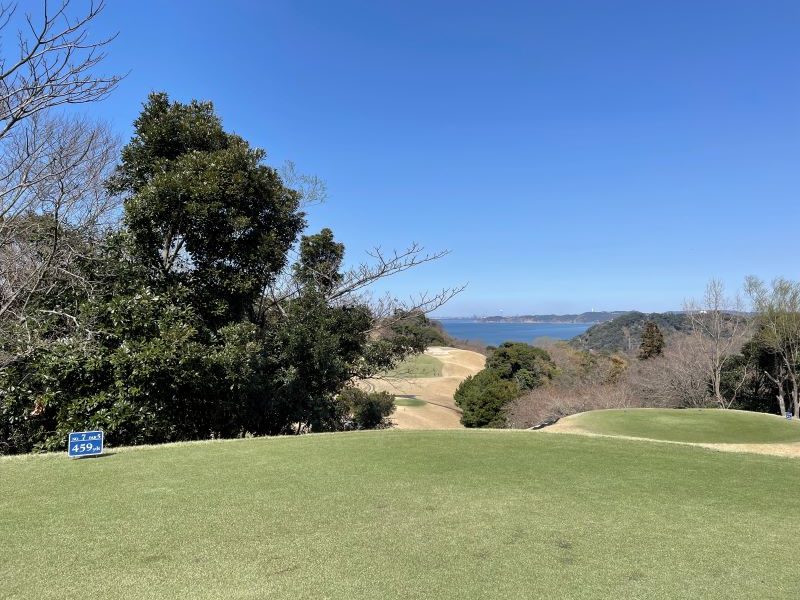
The 9th hole (464 yards, par 5) is a par 5 hole where you hit down from the elevated teeing area towards the sea on the right. The tee shot is aimed towards the cross bunker on the right. From the second shot point, the course curves left towards the beautiful clubhouse with its Spanish tile roof, and a large pond spreads out on the right, making it a beautiful and impressive hole.
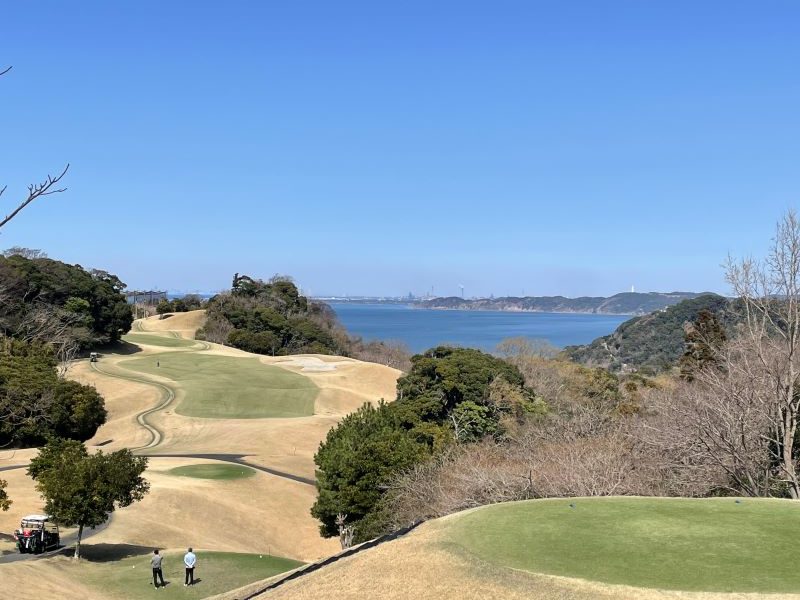
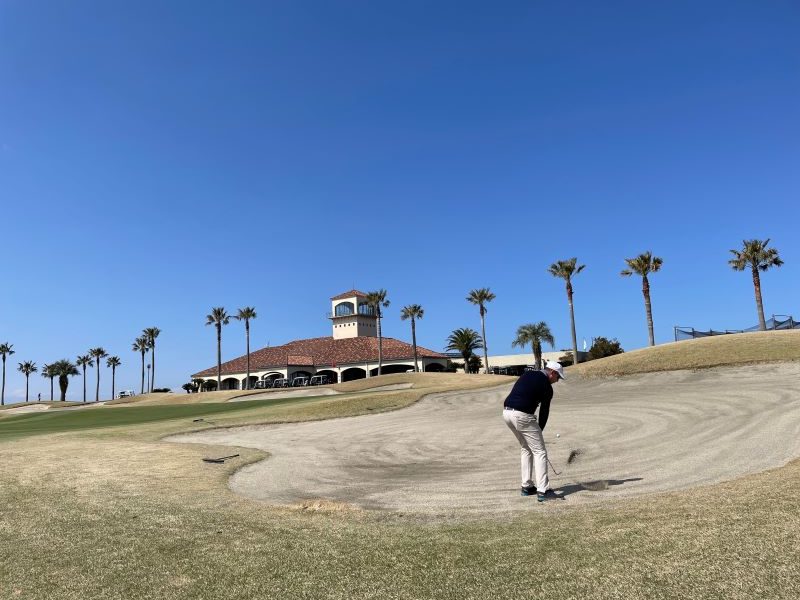
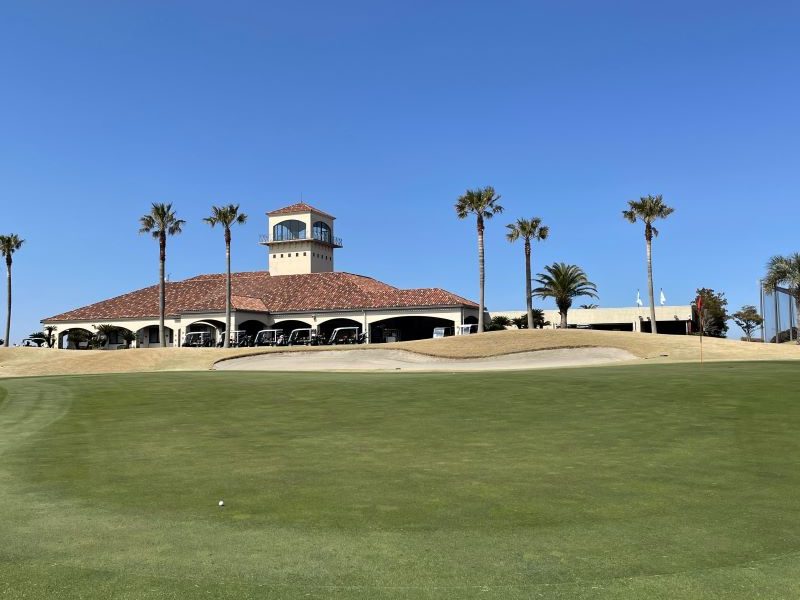
The 10th hole (178 yards, par 3) is a fairly long par 3 hole that hits down towards Tokyo Bay. The fairway is wide and there are no guard bunkers in front of the green, so you can hit your tee shot without feeling any pressure, but you need to be careful of the strong sea breeze that can affect you on some days.
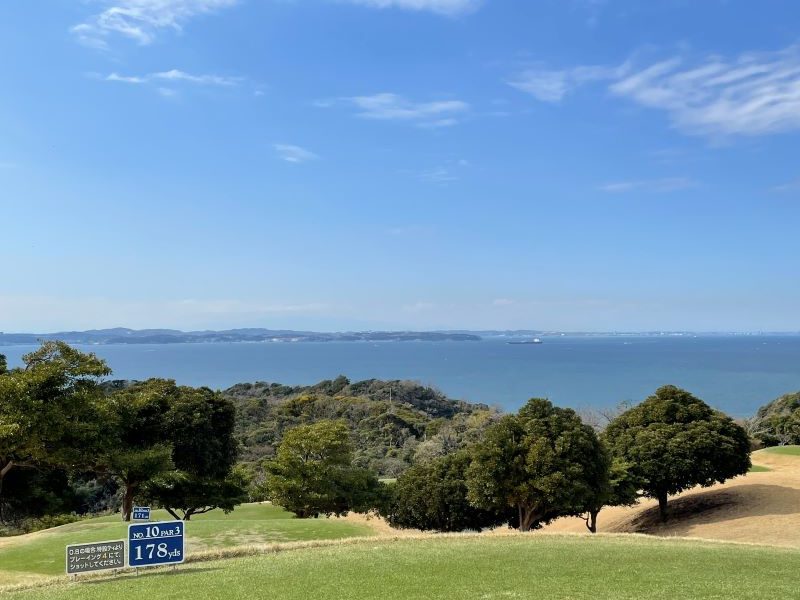
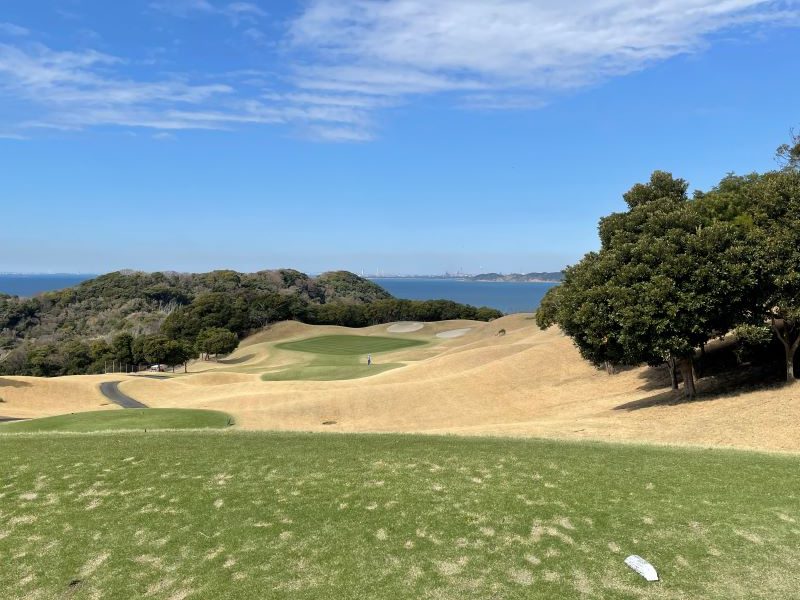
The 11th hole (527 yards, par 5) is a relatively long and difficult par 5 hole with a valley looming on the right side of the teeing area. The fairway curves to the left, so you have to go over the longest valley on the right side, which can be quite stressful.
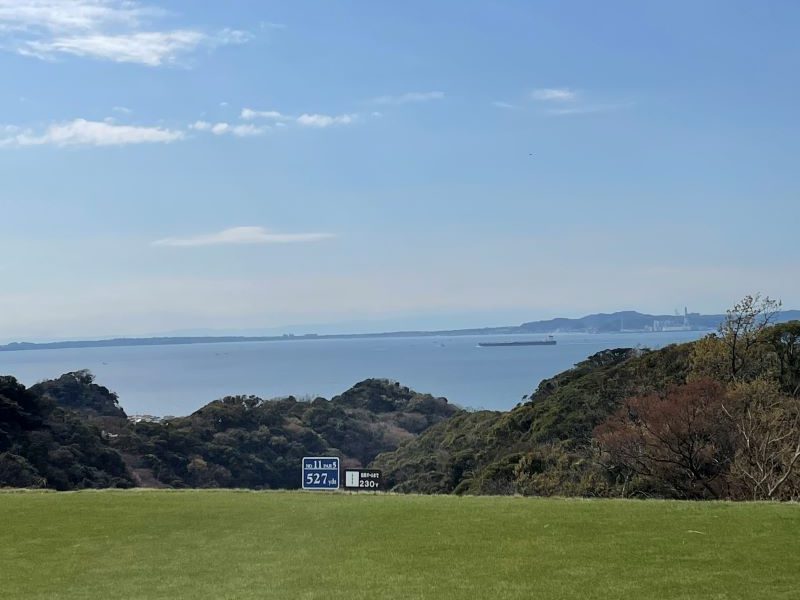
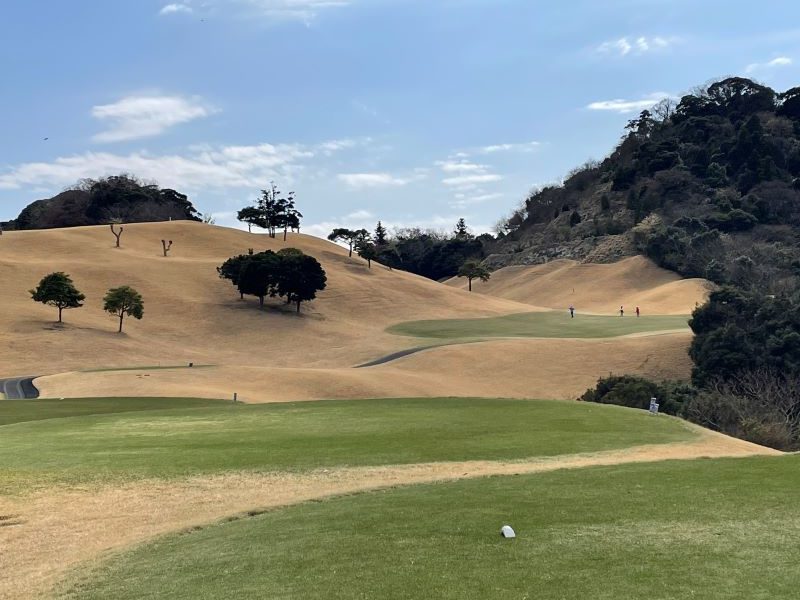
The 12th hole (318 yards, par 4) is a gentle downhill hole that curves gently to the left. Because it is short, long hitters can aim for a one-on shot, but the fairway looks narrow from the teeing area due to the OB lines and trees on both sides, making the tee shot feel pressured.
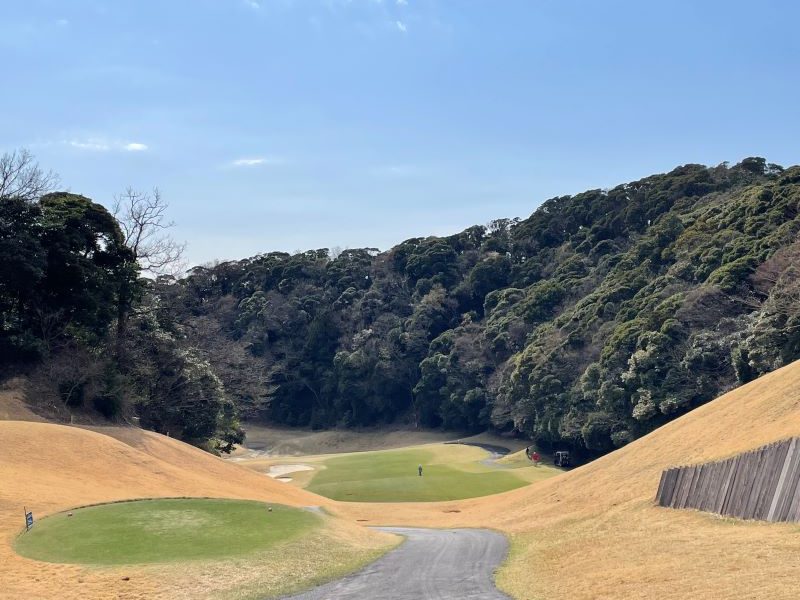
Hole 13 (141 yards, par 3) is a beautiful par 3 hole over a pond. It is slightly downhill, and you can see the top of the green, but there is a steep slope from the front of the green to the pond, so if your tee shot is even a little short, the ball will bounce back and be sucked into the pond.
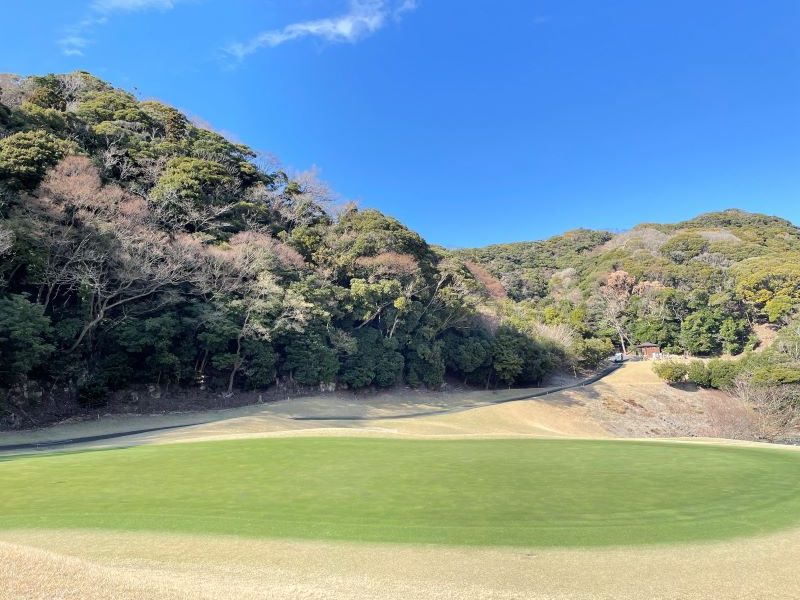
The 14th hole (300 yards, par 4) is a short par 4 hole that slopes gently up to the green. Be especially careful of the OB line on the right.

The 15th hole (335 yards, par 4) is a slightly downhill par 4 with two impressive ponds in front of the left side of the green. If you attack from the left side to avoid the OB zone on the right, you will have a difficult approach shot over the ponds.
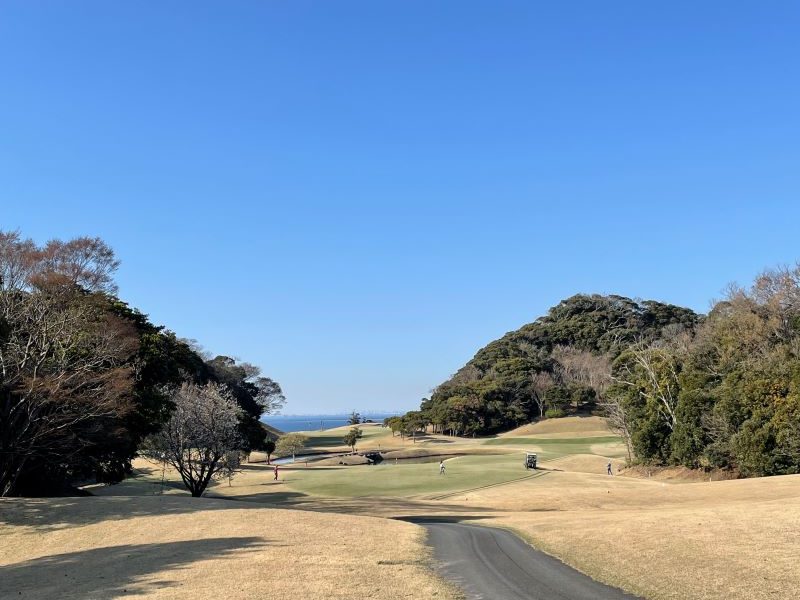
The 16th hole (402 yards, par 4) is an impressive and beautiful par 4 hole where you hit your tee shot towards Tokyo Bay from the side of the pond between the 15th and 16th holes. It is a good distance and curves sharply to the right from the second shot point towards the clubhouse. The shortest route would be to go over the top of the right slope, but there is an OB line close by. The tee shot should be hit between the cross bunker you can see in front and the foot of the mountain, and although there is still some distance left, it is safe to aim straight for the green from there.
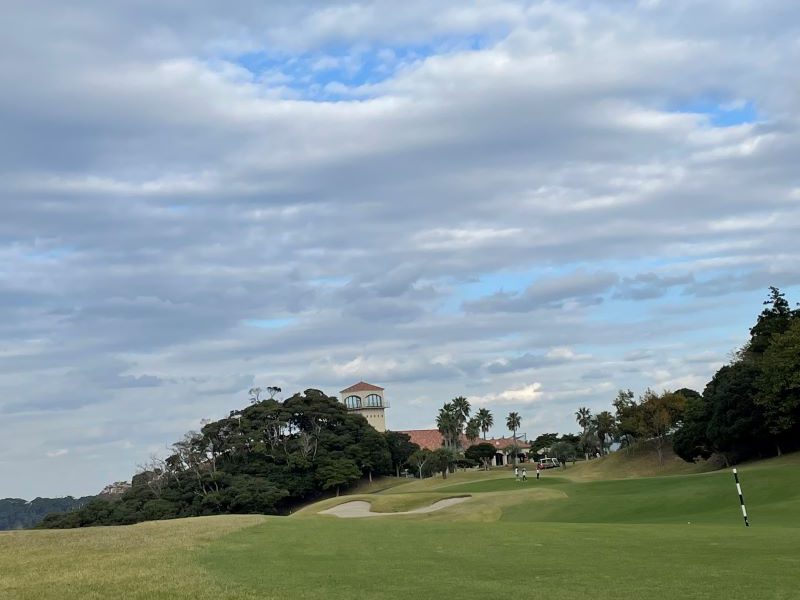
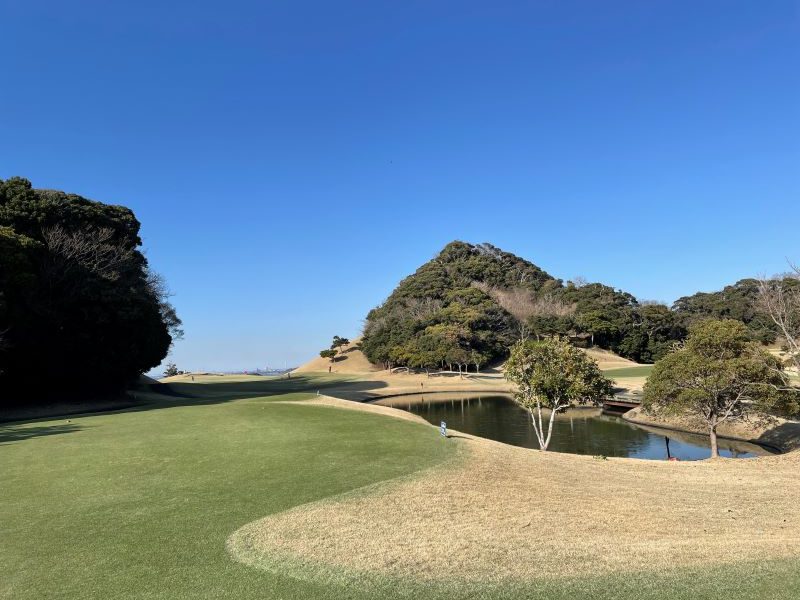
The 17th hole (332 yards, par 4) is a straight par 4 hole where the tee shot is downhill and the second shot is uphill. The fairway is relatively wide and it is an easy hole to get a par, but the symbolic tree towering to the right of the fairway obstructs the approach, so you need to aim to the left for the tee shot.
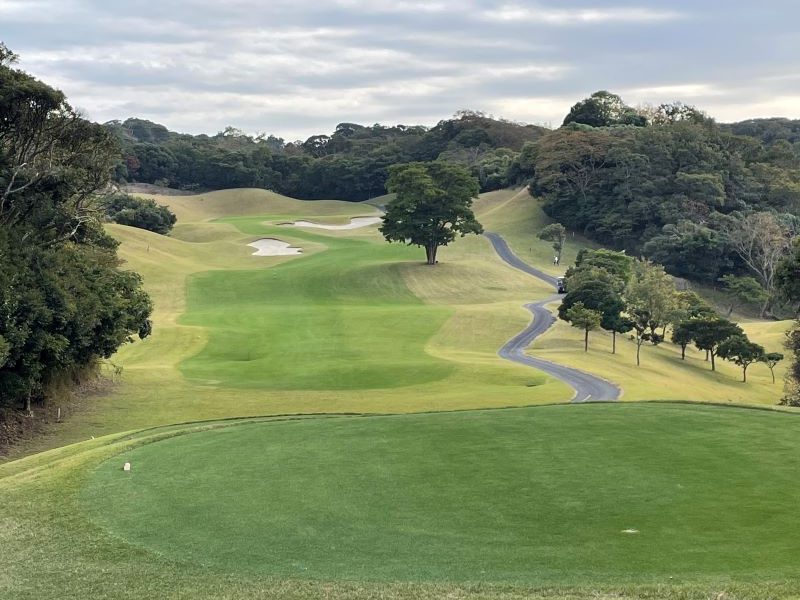

The final hole, the 18th (478 yards, par 5), is a par 5 hole that is slightly uphill towards the clubhouse. There is a large pond in front of the green and pure white beach sand bunkers surround the pond. Just beyond the pond lies a beautiful clubhouse and green, making this a hole with an impressive, picturesque view.
The pond encroaches into the fairway more than it appears from a distance, the green is long and narrow, and there is a large guard bunker, so an approach shot that accurately hits the green is necessary. Although it is a relatively short par 5, the visual effects are effective, making it a challenging final hole that requires strategy.
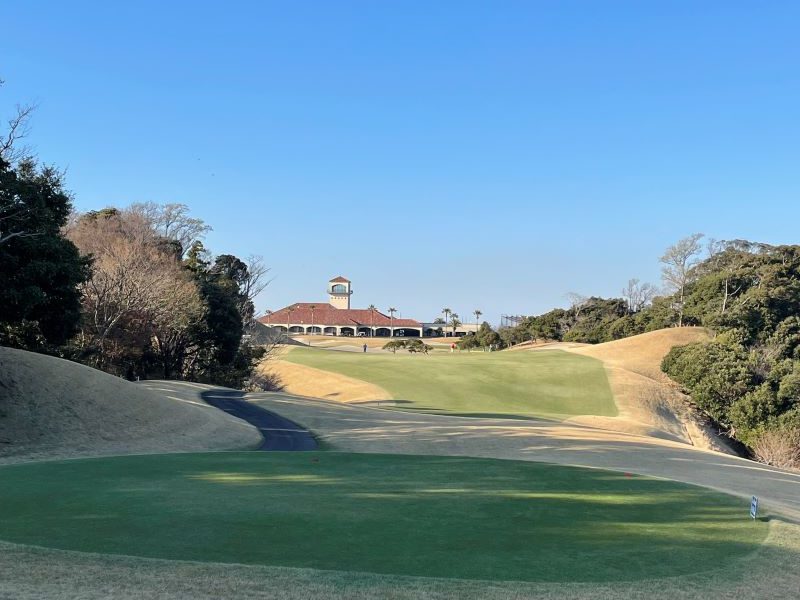
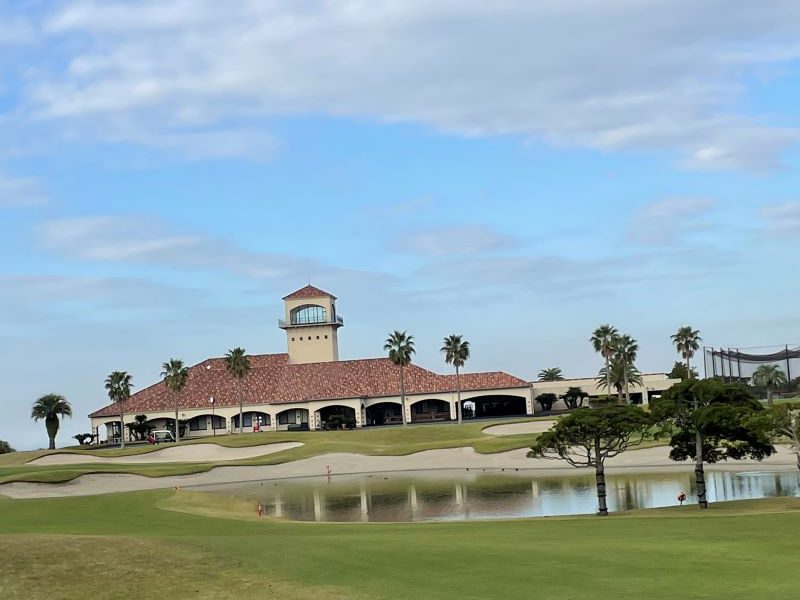
It is about 5 km from the Futtsu Takeoka Interchange on the Tateyama Expressway, and from downtown Tokyo it takes about 90 minutes via the Aqua-Line which crosses Tokyo Bay. It is also easily accessible by Tokyo Bay Ferry which connects Kurihama Port on the Miura Peninsula across the coast with Kanaya Port near the course in 40 minutes.
After your round, it’s fun to take a leisurely ride home across Tokyo Bay on a ferry while watching the sun set over the sea.
Enjoy the magnificent seaside resort course that is the closest to Tokyo.
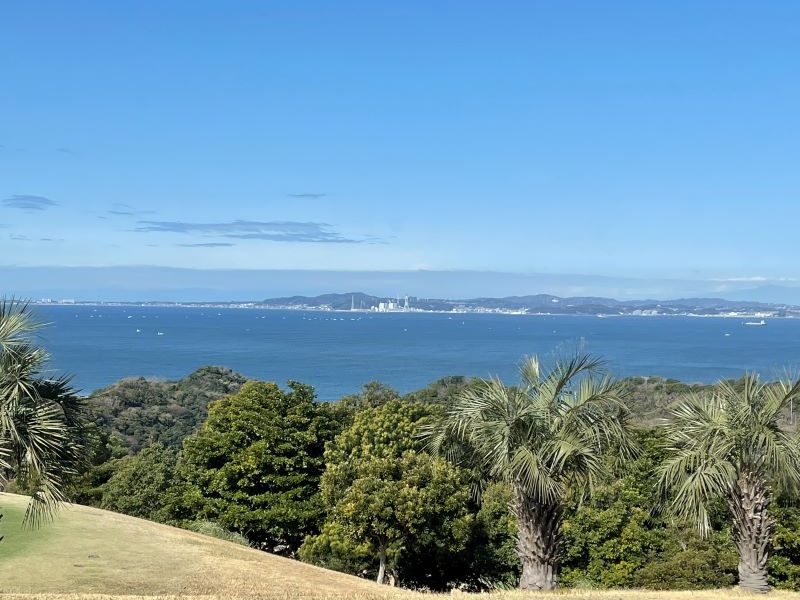
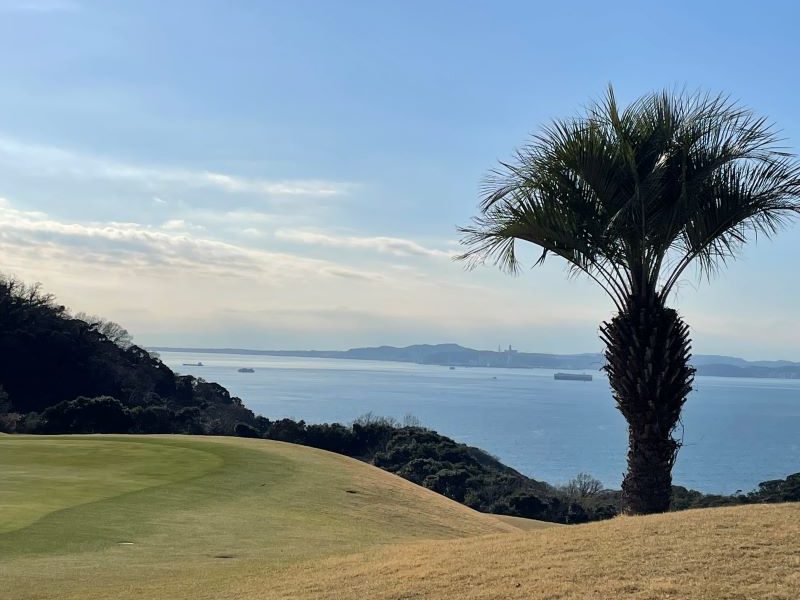
Tokyo Bay-Side Golf Course
| Address | 4277-2 Takeoka, Futtsu city, CHIBA |
| TEL | +81-439-67-2611 |
| Website | https://booking.pacificgolf.co.jp/guide/159.html (Japanese ONLY) |

